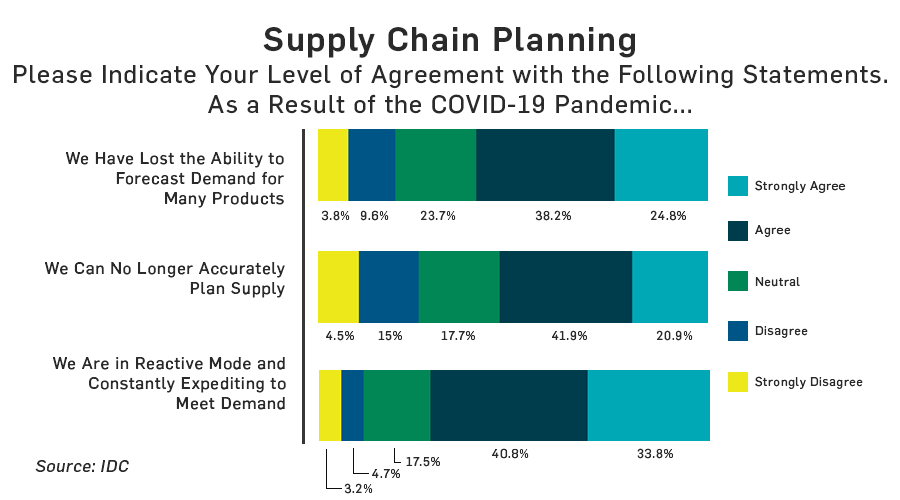Table of contents
Key Takeaways
-
A multienterprise work management strategy can help you knock down information silos, increase supply chain visibility, and streamline supplier collaboration processes.
-
Legacy software systems serve an important purpose, but they limit your ability to share information with supply chain partners, according to IDC.
Pharmaceutical companies of all sizes depend on complex networks of partners to source and deliver life-saving medicines to patients. But traditional business applications like enterprise resource planning (ERP), quality management, and customer relationship management (CRM) systems provide little help when it comes to increasing supply chain visibility and sharing critical information between trading partners, according to a new report from analyst firm IDC.
All too often, companies in the pharmaceutical industry are deploying local siloed improvement solutions and fragmented fixes to address disruptions.
Legacy software systems were not designed to accommodate shared work that spans multiple enterprises and, as a result, they create information silos that prevent the supply network from effectively orchestrating a coordinated response to issues that require team collaboration. Whether it’s a materials shortage, a last minute manufacturing change, or even a “good problem” like a late request to increase the size of an order, when issues arise, the only options for multienterprise collaboration are often email, faxes, and spreadsheets.
“All too often, companies in the pharmaceutical industry are deploying local siloed improvement solutions and fragmented fixes to address disruptions,” IDC Program Vice President and Supply Chain Strategies Practice Leader Simon Ellis wrote in the report. “They are often stuck using traditional operational enterprise software vendors with limited cognitive and augmented analytics capabilities while focusing on inventory as the sole and safe low-risk form of agility, when they should be leading a prioritized and coordinated business focus on resilient, responsive, reliable, and compliant product supply to plan and focus on meeting agreed service levels."
IDC surveyed 532 companies across the end-to-end pharma supply chain to gauge the impact of supply disruptions caused by the COVID-19 pandemic. The study found that information silos and a lack of supply chain visibility have a negative impact on the ability of the supply chain to companies to respond effectively to unexpected disruptions. They also hinder critical business priorities, like demand forecast accuracy.

Boost supply chain visibility with a single source of truth
What will it take for pharma supply chain companies to knock down the information barriers that separate them? The answer is tighter supplier collaboration and multienterprise work management, a new type of software that enables teams to work collaboratively with suppliers in a single, virtual workspace to identify, track, and quickly resolve supplier issues. Some of the key capabilities of a multienterprise work management platform like TraceLink’s Agile Process Teams include:
- A secure repository with the latest documents, notes, and comments in one place.
- The ability to integrate and share information from traditional enterprise systems.
- Shared dashboards for accessing information across all products, suppliers, and customers.
A multienterprise work management strategy provides a single source of data for stakeholders and business leaders inside and outside of your organization so you can make better, data-driven decisions and ensure that everyone involved is working from the same set of facts.
“Companies that have yet to adopt digital technology in their supply chain or are just beginning their supply chain transformation efforts must take action now. These companies can start by exploring ways to deploy enabling technology with agile processes,” Ellis wrote. “These processes should support end-to-end collaboration, provide actionable visibility, and enable data sharing between partners both inside and outside the organization and across all stakeholder functions.”






